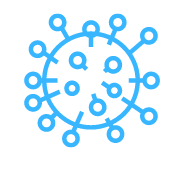What is Congestion? “Understanding Congestion”
“What is Congestion?”
Congestion refers to a situation where there is an excessive buildup or overcrowding of people, vehicles, or objects in a particular area, often resulting in slower movement or difficulty in navigating through that area.
Congestion can occur in various contexts, such as:
1. Traffic Congestion: This occurs when there are too many vehicles on the roads, leading to slower speeds, longer travel times, and increased frustration for drivers. It often happens during peak hours or in areas with inadequate road infrastructure.
2. Urban Congestion: This type of congestion happens in densely populated cities or urban areas, where there is limited space for people, buildings, and services. It can lead to crowded streets, crowded public transportation, and a strain on resources like housing, healthcare, and public amenities.
3. Internet Congestion: It refers to a situation where there is excessive demand on the internet infrastructure, leading to slower internet speeds, buffering, or even complete disruption of service. This can happen during peak usage hours or due to technical issues.
4. Congested Airspace: Air traffic congestion occurs when there is a high volume of aircraft trying to use the same airspace or airport, causing delays, diversions, and increased risks for air transportation.
Congestion can have various negative impacts, such as increased pollution, decreased productivity, heightened stress levels, and reduced quality of life. To mitigate congestion, measures like improving transportation infrastructure, implementing traffic management systems, and promoting alternative modes of transportation are often employed.
“Understanding Congestion”
Congestion refers to a state of overcrowding or obstruction that occurs when there is too much demand for a particular resource, facility, or system. It can happen in various contexts, such as transportation networks, urban areas, communication systems, or even in the human body.
In transportation, congestion occurs when the volume of vehicles on roads, highways, or public transportation systems exceeds their capacity to efficiently handle the traffic. This can lead to slower travel times, increased delays, and reduced overall efficiency of the transportation system. Congestion not only impacts individuals’ ability to reach their destinations on time but also results in economic costs due to lost productivity and increased fuel consumption.
In urban areas, congestion often arises from a combination of factors such as population growth, inadequate infrastructure, poor urban planning, and high car dependency. The resulting traffic congestion can lead to increased air pollution, noise, and reduced quality of life for residents.
In communication systems, congestion can occur when there is an excessive demand for data transmission or network bandwidth, leading to decreased performance, slower data rates, and increased latency. This can happen during peak usage times or when the network infrastructure is insufficient to handle the demand.
In the human body, congestion can occur when blood or other bodily fluids accumulate in a specific area due to various factors such as inflammation, infection, or impaired circulation. For example, nasal congestion is a common symptom of the common cold or allergies, where the nasal passages become blocked due to swelling of the nasal tissues.
Overall, congestion is a phenomenon that occurs when demand exceeds capacity, resulting in inefficiencies, delays, and reduced functionality. Understanding the causes and effects of congestion is crucial for developing effective strategies to mitigate its impact and improve the efficiency of various systems.
“Causes of Congestion”
Congestion refers to the occurrence of excessive traffic or crowding in a particular area, resulting in slower movement and decreased efficiency. There are several causes of congestion, including:
1. High Volume of Vehicles: One major cause of congestion is the sheer number of vehicles on the road. As more people own cars and travel regularly, the volume of traffic increases, leading to congestion during peak hours.
2. Inadequate Infrastructure: Insufficient infrastructure, such as roads, highways, and intersections, can contribute to congestion issues. Narrow lanes, lack of proper signage, and poorly designed intersections can all impede traffic flow and lead to congestion.
3. Traffic Accidents: Accidents on the road can cause temporary congestion as lanes may be blocked and traffic diverted. Congestion can worsen if accidents occur during peak hours or in areas with limited alternative routes.
4. Traffic Signal Problems: Malfunctioning or poorly timed traffic signals can also cause congestion. If signals do not synchronize properly or are not calibrated to match the flow of traffic, it can result in stop-and-go movement, leading to congestion.
5. Road Construction and Maintenance: Construction work and routine maintenance on roads often require lane closures or detours, causing congestion and delays. While these efforts aim to improve infrastructure in the long run, they can sometimes exacerbate congestion in the short term.
6. Lack of Public Transport: Insufficient or inefficient public transportation systems can contribute to congestion. If people do not have viable alternatives to driving their vehicles, the number of cars on the road increases, leading to congestion.
7. Poor Urban Planning: Inadequate urban planning, including poor land use and zoning decisions, can also contribute to congestion. If residential areas are far from workplaces, schools, or commercial centers, people will have to travel longer distances, leading to increased traffic congestion.
8. Special Events and Festivals: Large-scale events, festivals, or ceremonies can attract a significant number of people to a specific area, causing congestion. If the road network is not adequately prepared for such events, traffic can quickly come to a standstill.
Addressing congestion issues requires a combination of measures such as improving infrastructure, promoting efficient public transport, implementing proper traffic management techniques, and encouraging alternative modes of transportation.
